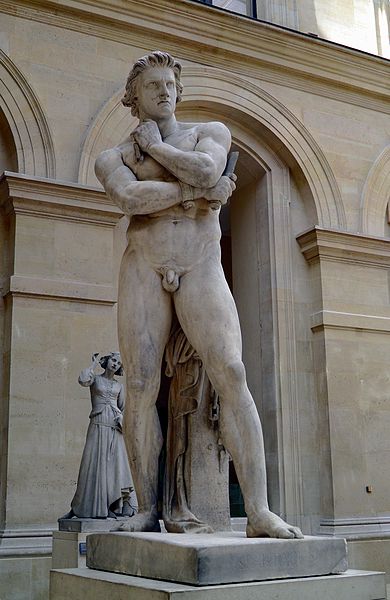Difference between revisions of "Spartacus (1830 Foyatier), art"
Jump to navigation
Jump to search
| Line 7: | Line 7: | ||
The larger-than-life statue, in marble, represents Spartacus breaking his chains. Originally erected in an ensemble of eight statues for l'allée des grands hommes ("Avenue of Great Men") in the Jardin des Tuileries in Paris [France], the statue was moved to the Musée du Louvre in 1877. | The larger-than-life statue, in marble, represents Spartacus breaking his chains. Originally erected in an ensemble of eight statues for l'allée des grands hommes ("Avenue of Great Men") in the Jardin des Tuileries in Paris [France], the statue was moved to the Musée du Louvre in 1877. | ||
[[Category:1830|*Foyatier]] | [[Category:1830|*Foyatier]] | ||
Revision as of 13:20, 24 December 2013
Spartacus (1830) is a sculpture by Denis Foyatier, at Louvre Museum, Paris, France.
The larger-than-life statue, in marble, represents Spartacus breaking his chains. Originally erected in an ensemble of eight statues for l'allée des grands hommes ("Avenue of Great Men") in the Jardin des Tuileries in Paris [France], the statue was moved to the Musée du Louvre in 1877.
